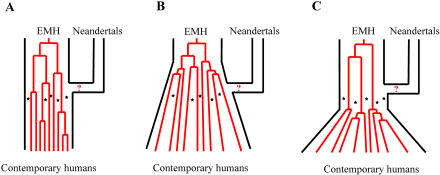Figure 4. Schematic Model of Putative Contribution of Neandertal mtDNA to the Gene Pool of Modern Humans.
(A) Under the assumption of a constant effective population size of 10,000 for modern humans, contemporary mtDNAs trace back to approximately five mtDNA lineages 25,000 years ago. The modern human fossils represent five additional samples from around the time of putative admixture (stars). The contemporary and early modern human (EMH) samples reject a Neandertal contribution of 25% or more to modern humans about 30,000 years ago (p ≤ 0.05).
(B) Under the more realistic scenario of an expansion of the human population during and after the colonization of Europe, a smaller Neandertal contribution can be excluded because the number of ancestors of the current human gene pool was larger 30,000 years ago. However, the contribution that can be excluded would depend on when and how the expansion occurred.
(C) Under the scenario that population size was constant before a putative merging with the Neandertal population and expanded only thereafter, the Neandertal contribution could have been larger, but similarly depends on how the expansion occurred.

